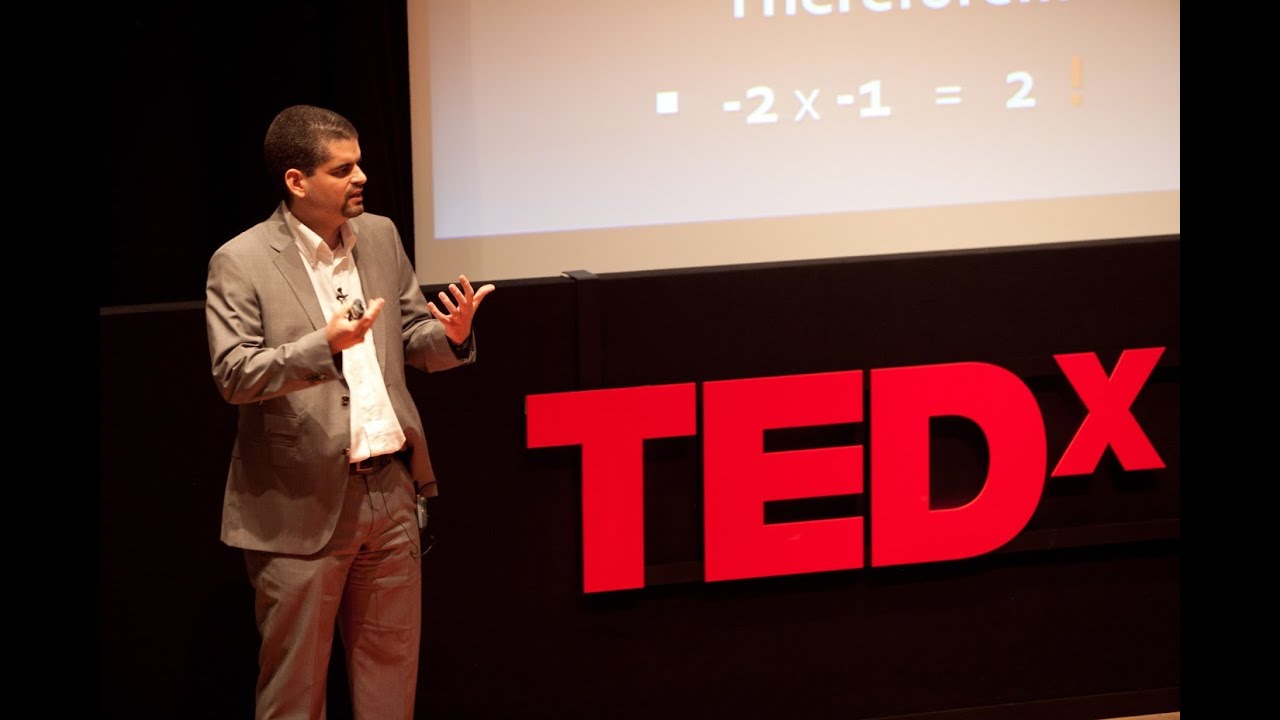Bernardo Kastrup Speaking At Tedx Brainport 2011 (Properly Captioned)
Unleash Your Creative Genius with MuseMind: Your AI-Powered Content Creation Copilot. Try now! 🚀
Ladies and gentlemen, fasten your seatbelts as we embark on a journey to challenge the very nature of truth. We'll dive headfirst into the intricate world of human cognition, with the help of our trusty companions: computers.
The Mirrors of Our Clearest Thoughts
Have you ever marveled at the magic of a hand-held calculator? It performs feats with numbers that would take us mere mortals an eternity to accomplish. But let's dig deeper. Imagine a little filing cabinet inside that calculator, filled with numbers, connected to the calculating brain. This filing cabinet allows the calculator to swiftly retrieve, compute, and store results. It's like a symphony of numbers and logic.
Now, here's the kicker: this setup bears a striking resemblance to the inner workings of our brains. You see, a neuron's dendrites play the role of the filing cabinet, carrying input potentials, while the neuron's body acts as the calculator, producing the output. But, and it's a big but, there's a fundamental difference.
The Binary vs. The Neuronal Palette
Dive into the calculator's innards, and you'll find only two faithful companions: 0 and 1, true or false, on or off. It's a world of absolutes, stark and unyielding. Computers think in binary, a realm of black and white, devoid of shades of gray.
But, here's the twist: while computers are binary fundamentalists, our neurons are more like artists painting with a palette of shades. Our brains revel in the nuance, embracing a spectrum of possibilities.
"But wait," you might say, "Isn't this a contradiction, Bernardo? You said computers mirror our thinking."
Indeed, I did. You see, our neurons may be nuanced, but our collective logic remains binary. When we ponder life's mysteries, like the existence of alien abductions, we seek answers in the form of "yes or no," "true or false." It's the way we're wired to think, rooted in the assumption of an objective world out there, separate from our minds.
The Correspondence Theory of Truth
This assumption, my friends, is the cornerstone of the "correspondence theory of truth." It's the rationale behind our binary thinking. We believe that the hard, objective facts of the world provide the foundation for our knowledge of reality. Alien abductions are real if they occur in this objective world; otherwise, they're mere fantasy.
However, dear readers, brace yourselves. Physics has a curveball to throw. Since 1981, an experiment has been shaking the foundations of realism. Picture this: a light source splits a photon into two, and detectors at each end measure properties of these photons. The shocker? What we choose to measure on one side instantaneously influences what's measured on the other, even miles apart, and even after the photons are in flight.
The Quantum Conundrum
Two hypotheses emerge: first, that the photons possess a magical connection beyond space and time. Second, that the photons only exist when we observe them. Yes, it sounds mind-boggling, but the evidence leans towards the latter.
In 2007, Austrian physicists uncovered a correlation that couldn't be explained by interconnected photons. The implication? Realism, the belief in an objective, external reality, wobbles on unsteady ground. If it crumbles, so does the very foundation of our binary thinking.
The Mathematics of Constructed Truth
Now, let's delve into the world of mathematics. Early 20th-century mathematicians saw math as an external, objective realm waiting to be discovered. Then came Luitzen Brouwer, shaking things up. He claimed mathematicians didn't discover math; they created it. But wait, doesn't this throw truth into chaos?
No, because Brouwer revealed that constructed truths aren't arbitrary. They must be consistent with the choices made. Every truth chosen entangles us in a web of implications, reducing our freedom to make new choices. Take, for instance, the mind-bending notion that multiplying debt by more debt somehow cancels it out.
The Absurdity of Reality
So, what if our reality, including tables and chairs, unfolds from primordial choices, entangling us in this web of implications? What if these choices are now hardwired into our collective psyche, making reality seem objective and autonomous?
Imagine that our logic, the way we think, is just a subset of what's truly possible. Beyond that lies a translogical reality, a realm of meaningful absurdity, closer to dreams than cold logic.
The Artistry of M.C. Escher
To visualize this, turn to the art of M.C. Escher. His mind-bending drawings show a non-binary reality. At first, you see water flowing down, but as you follow it, things get weird. Columns defy gravity, and the notion of "up" and "down" loses its grip. It's a reality that's not bivalent but profoundly real, like a dream.
The Profound Meaning of Absurdity
Absurdity doesn't mean meaninglessness. As Carl Jung taught us, the absurd, the discontinuous, the non-bivalent, can be deeply meaningful. It's a realm where rules of logic bend and twist, offering us richer experiences.
In conclusion, my friends, we live in a vast, enigmatic reality. Our logic, while powerful, may be just a tiny box within it. Beyond that box lies a world of translogical beauty, a reality that defies the binary and invites us to explore the profound meaning of the absurd.
Thank you for joining me on this mind-bending journey into the heart of truth and reality.

Related Recaps
- 28 Days Later: What is the story behind this story?
- Good to Know: beating sleepiness at work
- Ukraine War Up. EXTRA (20230307): Mines & Demining, Lancet Drone Threat, & Mobik Woes
- ‘I Believe I’m Madeleine McCann’
- 🔴[TRỰC TIẾP] Pháp Thoại Sư Thích Chánh Định thuyết giảng, Tại Chùa An Hòa. Q.12. TP.HCM.